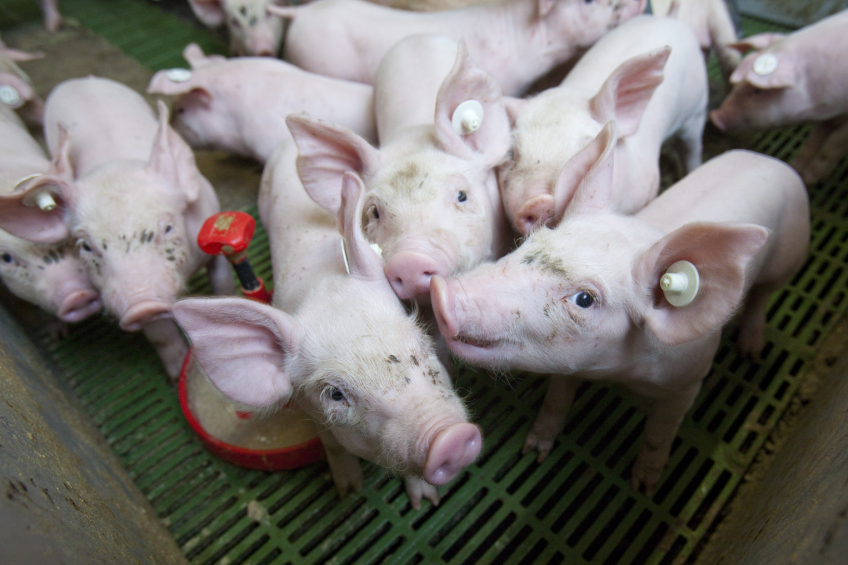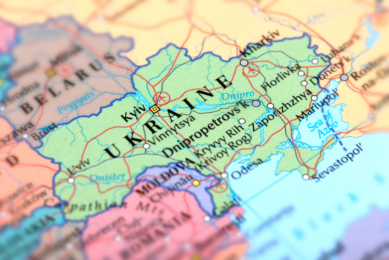Making sure all piglets get their iron in time

Piglets receiving additional iron supplements at the age of day 20 benefit by having better growth rates.
Modern production methods have led to an impressive increase in ?productivity but have also increased iron needs in piglets. A potential iron gap can inhibit growth rates and ?profits significantly. The imposing threat can be eliminated simply.
The remarkable development in modern swine production is a success story with piglets displaying incredible growth rates in their first weeks of life. However, the increased productivity has increased iron needs in piglets and, thereby, increased the risk of iron deficiency anaemia.’ This is a well-known statement by professor Jens Peter Nielsen, University of Copenhagen, who is chairman of the International Iron Expert Board.
Anaemia in piglets is a condition characterised by lack of haemoglobin in the body’s red blood cells. Haemoglobin plays an important part in transporting oxygen from the lungs to the tissues of the body, and when the hemoglobin level is reduced, the body’s access to the vital oxygen is reduced. The most common cause of anaemia in piglets is iron deficiency.
Iron deficiency occurs when the piglet’s own iron stores are depleted or when the exposure to stress conditions either inhibits the build-up of haemoglobin or increases the degradation of haemoglobin in the piglet. A critical time for iron deficiency is at weaning, when iron stores following the initial iron dextran injection in the first days of life may be depleted.
Increased iron needs
The new increased risk of iron deficiency anaemia is caused by several factors. Increased litter sizes, for one, result in lower iron stores at birth for the individual piglet. For instance, in Denmark, from 1996 to 2012 there has been a 42.14 % rise in the number of total born piglets per litter from 12.03 to 17.1 (see Figure 2). With the increased litter sizes, the already low levels of iron in the sow’s milk are diminished to even lower levels.
Fast growers at risk
Furthermore, there has been an increased spread in birth weights and growth rates, and the difference in body weight for a small (900 g) and a large (2,500 g) piglet means that standard doses of iron supplementation may be inadequate for optimal treatment. Contrary to what many believe, the fast growers are increasingly at risk of developing iron deficiency, as they face an increased risk of depletion of available iron stores due to their accelerated growth rates.
To quote Nielsen once more: “The fast growers are often on an all-milk diet which offers a good source of all nutrients required by the piglet, except for iron. Weight gain on an all-milk diet is, therefore, associated with an increased risk of developing iron deficiency, which could eventually lead to iron deficiency anaemia.”
Permanent deficit in growth
In piglets on an all-milk diet, the iron stores following injection of the initial 200 mg iron dextran in the piglet’s first days of life are depleted when the piglet reaches a weight gain of approximately 5 kg. Additional iron may be available during the lactation period in standard creep feed or oral iron formulations, but if sow milk is available, the piglets are likely to prefer this over the creep feed, and sow milk is inadequate as an iron source since it contains as little as 1.0-1.5 mg iron per liter.
Low haemoglobin levels during weaning inhibit growth significantly – and even when haemoglobin levels are restored, the deficit in growth will be permanent. A variation of 10 g Hb/l in haemoglobin levels at weaning is associated with an average variation of 18 g/day in weight gain three weeks after weaning. This corresponds to an average 378 g variation in weight gain.
Second injection for fast growers
Studies suggest that fast growers can benefit from a second injection of a single 1 ml dose of 200 mg Uniferon (injectable iron dextran, Pharmacosmos) at the age of 20 days, in addition to the initial 200 mg given at day 1-3. The piglets receiving the second injection have a significantly higher growth rate of approximately 20 g/day for the first 15 days after weaning. This was shown in a study by John Haugegaard and others in a publication in The Pig Journal in 2008.
One breeder that has introduced second injections for his fast growers is Peder Rom Nielsen, chief pig production manager at Halychyna Zahid, Ukraine. “It was really an eye-opener to me when I realised that it is not only the smallest and, seemingly, weakest piglets that are at risk of developing anaemia, but also my fast growers. When I realised this, I started to monitor my piglets prior to weaning and introduced a second injection for the piglets with haemoglobin levels below 110 g Hb/l. Piglets receiving a second injection at Halychyna Zahid receive it one week before weaning (day 14) to optimise the benefit from the injection. And it has made an impressing difference in weight gain and, consequently, profits,” Nielsen says.
With limited iron stores at birth and low uptake from milk and feed, on average, the piglet requires a supplement of approximately 53 mg iron per kg growth.
An Iron/Weight Gain Optimizer tool is available at www.uniferon.com
The optimal haemoglobin level
The optimal haemoglobin concentration in piglets at weaning is 110 g Hb/l. Haemoglobin levels below 110 g Hb/l may indicate iron deficiency and cause reduced oxygen transport, immune function, vitality and metabolism. Haemoglobin concentrations below 90 g Hb/l define cases of acute clinical iron deficiency anaemia.











